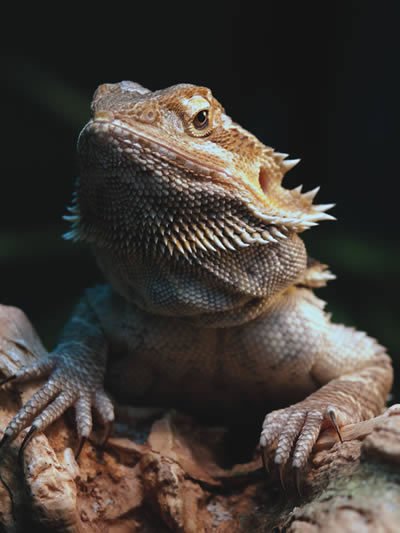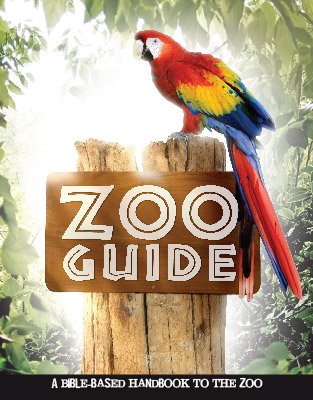Inland Bearded Dragon
Virtual-Pano, CC BY 4.0, via Wikimedia Commons
This species is called “bearded” because the throat has a region that is flared when it is angry or excited, giving it a beard-like appearance.

Design
The inland bearded dragon searches for prey by perching on tall objects and watching for it. If food is scarce for a long period, it can remain dormant underground until conditions improve. If the dragon feels threatened, it will flare its throat and open its mouth to appear larger and more intimidating. These defense features were designed but were not necessary until after the Fall.
Features
- This species is called “bearded” because the throat has a region that is flared when it is angry or excited, giving it a beard-like appearance.
- Most inland bearded dragons are brown or tan while some have patterns along their backs.
Fun Facts
- The inland bearded dragon loves the sun. It will sunbathe for hours during the morning and afternoon.
- Smaller inland bearded dragons will “wave” at the more dominant male with one of their forelimbs.
Created Kind Members
Desert agama
CLASS: Reptilia (reptiles)
ORDER: Squamata (amphisbaenians, lizards, and snakes [scaly])
FAMILY: Agamidae (Old Word reptiles)
GENUS/SPECIES: Pogona vitticeps
Size: 16–22 in (0.4–0.6 m)
Weight: 10–18 oz (0.3–0.5 kg)
Original Diet: Plants
Present Diet: Animals, insects, and plants
Habitat: Desert regions in central Australia
Zoo Guide
Make your next visit to the zoo more than just fun—make it factual and fascinating too! You could even start a personal “creation zoo tours” ministry. Featuring more than 100 animals, our long-awaited Zoo Guide includes beautiful pictures and explores the amazing facts and design features that point to our awesome Creator. Excellent gift for any one who loves animals!
Browse Kids Book- © 2025 Answers in Genesis
- Privacy Policy
- Contact
- About

